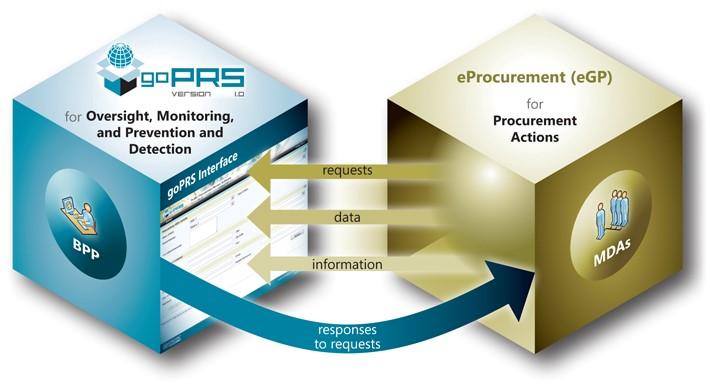Key Features
goPRS supports the implementation of PP reform in the organizational arrangement with a decentralization of the procurement function to procuring entities and centralization of oversight, monitoring, prevention and detection of corruption responsibilities to the regulatory body.

Oversight
goPRS enhances the ability of a PPRA to oversee and monitor individual procurements and to review specific contract awards which fall above prior review thresholds (the issue of cumulative contracts needs to be borne in mind i.e. where framework agreements are used). goPRS increases the efficiency of the procurement process in terms of both cost and benefit and to ensure that each procurement follows the UNCITRAL principles of accountability, fairness, transparency and equality.
Management and Monitoring
goPRS organizes data and information to provide MDAs with the information needed to better manage the procurement process. By identifying inefficiencies, gaps and redundancies in procurement procedures, efficiencies in both time and money can be achieved. Importantly, MDAs will be able to reference pricing data and access information on the eligibility and qualifications of specific bidders.
Prevention and Detection
goPRS gathers data and knowledge of corruption patterns and modalities in procurement by focusing on understanding the actual experience of corruption, its forms and the areas of vulnerabilities. goPRS is an evidence-based tool that collects and analyzes data on patterns of unexpected prices or other information to provide more solid and actionable evidence of possible corruption and its nature. The goal of goPRS is not to simply score or rank, but rather produce information for analysis, management and decision-making to obtain greater value for money and to prevent fraud and corruption.

